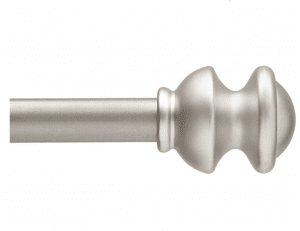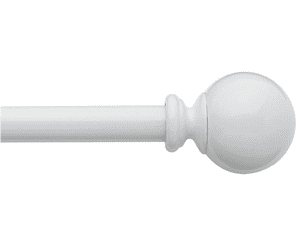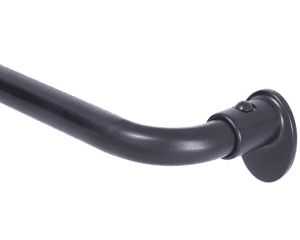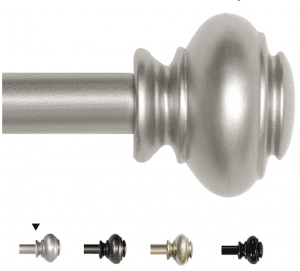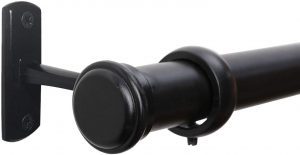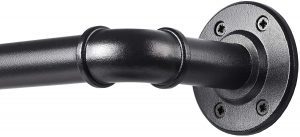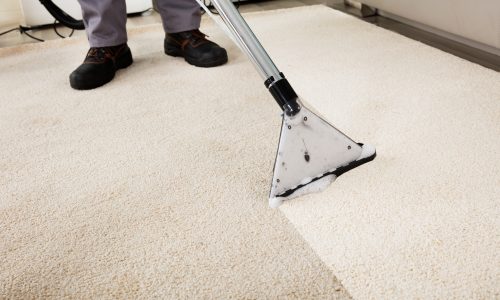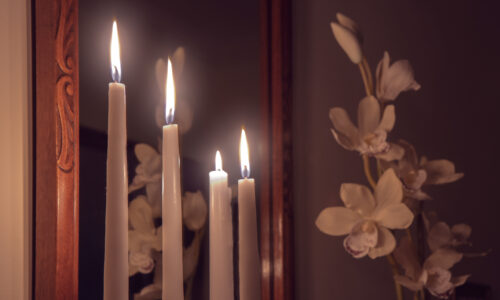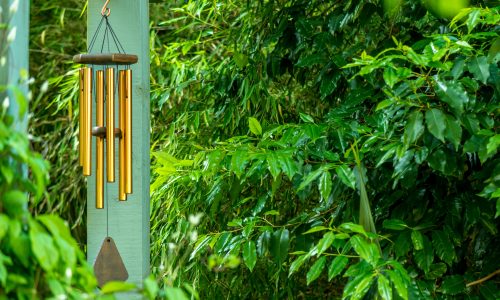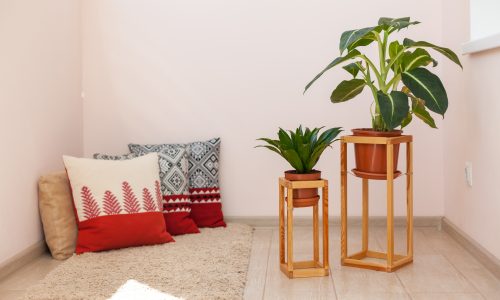The Best Curtain Rod, 48 To 86-Inch

Our Review Process
Don't Waste Your Money is focused on helping you make the best purchasing decision. Our team of experts spends hundreds of hours analyzing, testing, and researching products so you don't have to. Learn more.
Our Picks For The Top Curtain Rods, 48 To 86-Inch
- 1. Kenney Telescoping Brushed Nickel Finish Curtain Rod, 48 To 86-Inch
- 2. Bali Blinds Decorative Ball Caps Curtain Rod, 48 To 84-Inch
- 3. Eclipse Room Darkening Wrap Curtain Rod, 48 To 86-Inch
- 4. H.VERSAILTEX Adjustable Steel Rod Curtain Rod, 48 To 86-Inch
- 5. Rose Home Fashion Ceiling & Wall Mount Compatible Curtain Rod, 48 To 86-Inch
- 6. Roiglori Aluminum & Steel Wrap-Around Curtain Rod, 48 To 86-Inch
This telescoping curtain rod in your choice of metallic finish is easy to install, with all items included. It can be used with light or medium-weight curtains. It's ideal for any room of the home and complements every style.
Easy to InstallThis metal curtain rod comes with everything you need a fuss-free install.
This curtain rod has a simple, classic look that can work with any kind of home décor. The rod has an adjustable length and measures 5/8 inches in diameter. All mounting hardware is included for easy installation.
Simple ChoiceThis simple metal rod with ball detail works with modern or traditional décor.
This wraparound curtain rod provides better darkening and energy-saving capabilities for your curtains. The telescoping rod is 5/8 inches in diameter and comes with mounting hardware and installation instructions.
Full CoverageThis rod wraps around the window so curtains can block more light and noise.
This waterproof and rustproof steel curtain rod with decorative resin finials is strong enough to hold up heavy fabrics and offers a modern, clean look. It's adjustable and all needed hardware is included.
Sturdy and StrongThis strong, steel adjustable curtain rod works with heavyweight curtains.
Buying Guide
Whether you’re changing up curtains in your kitchen window, the living room or the bedroom, getting the right curtain rod is essential. This seemingly minor accessory plays a vital role in not only hanging up window coverings but also adding to the look and feel of your space.
A curtain rod, which is also sometimes called a curtain rail, is the piece of equipment that supports the drapery on the wall. Typically a cylindrical rod, it is strong enough to hold up heavy drapes, either on its own or using rings. The ends of the curtain rod sometimes have decorative designs.
One of the most important aspects to consider when buying a curtain rod is the size you need, which depends on the size of the window and the weight of the drapery material. Many curtain rods are telescopic in nature, meaning that the rod can extend to a longer length. For example, a curtain rod that is marked for 48 to 84 inches can be extended to any length within that range. Fixed curtain rods, as the name suggests, are not telescopic and have only one length.
In addition to the length of the rod, you’ll also want to take note of its width. Typically, curtain rods will be between 1 and 3 inches in diameter. If you are using curtains made from a heavy material, it’s best to go with a rod that has a larger diameter so that it can fully support the weight of the window treatment. You may also wish to check that the holes punched into your curtain fit around the rod properly.
What to Look For
- Keep in mind that your curtain rod doesn’t have to be the same width as the window. Many people choose to make their windows appear larger by placing the curtain rod a few inches further than the width of the window on both sides. This gives the room a grander appeal.
- The height of your rod placement will depend on the height of the window and the height of the ceiling. Some people choose to hang the curtain rod a few inches above the window and closer to the ceiling so that it makes the room look taller.
- Curtain rods don’t only serve a functional purpose; they are decorative too. Consider the style of your room and how the curtain rod can enhance it. For example, if you have a modern, minimalist style, a plain metal rod without any embellishments may be the right look for the room. For a more classic or traditional appearance, go with a brass or gold rod with intricate scrollwork on the ends.
- Curtain rods are available in a number of materials, such as metal, plastic or wood. You can also find them in many different colors such as silver, black, white, gold and even rose gold. Both the material of the rod and the color help to create the aesthetic for your room.
- In traditional drapery styles, there is a sheer curtain behind a heavier curtain. You can find double curtain rods to support this type of classic look so that you can hang each curtain on a different rod and open them independently of one another.
More to Explore
What do you think the first curtains from very early civilizations were like? Experts believe Middle Eastern people living in tents in the desert may have used curtains to give them a bit of privacy as well as keep the sand and sun out. Wetting the curtains with water may have helped to keep them cool from the sun’s heat. In Egypt, the use of curtains dates back to 3,000 B.C.E,; evidence shows the ancient Egyptians used animal hides over doorways, followed by textiles.
Glass was an expensive commodity until about the 17th century, so windows in homes prior to that time typically did not have full panes of class. In medieval times, windows were open holes to the outside, and also small in size to reduce exposure to the elements. Later, some may have had small pieces of glass that were joined together with lead to create windows, which used wooden shutters to keep out the cold. Meanwhile, curtains were mostly used for beds, doorways or walls.
It wasn’t until a new plate glass process was invented in France that windows became larger and started being installed in the homes of wealthy Europeans, requiring drapes and curtains for privacy by about 1750.

